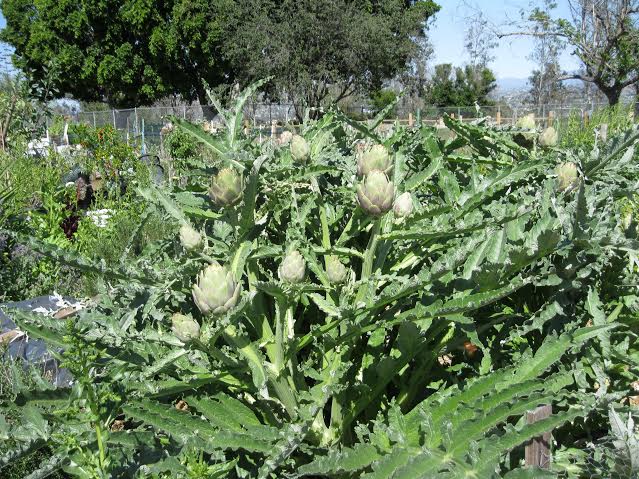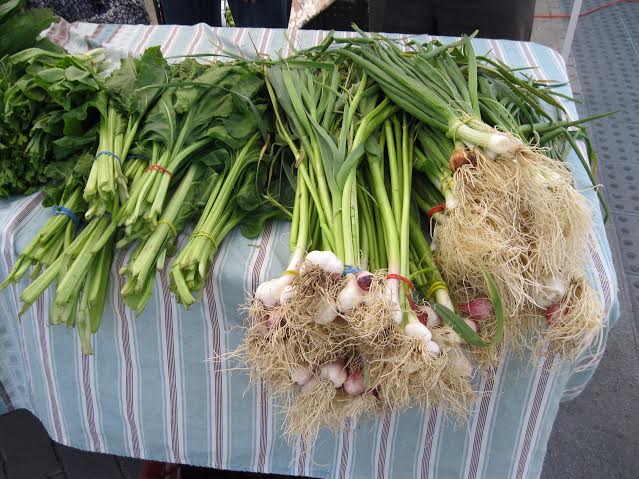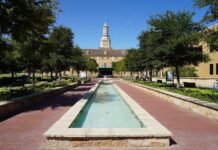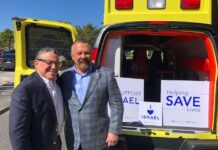It is not easy leaving your home and moving to a new country as an immigrant or refugee. Many immigrants and refugees’ lives are shattered by political or religious conflict and they have to flee their countries. The ones who arrive in the United States have to learn a new language, and get accustomed to a new culture and different types of food. Not only that, many immigrants and refugees go from living in a rural place where they had land, or perhaps a house in the city with a garden to living in small, urban apartments. Sometimes, they feel homesick and long for what they had back home.
This is why the opening of the IRC/Kaiser community garden in El Cajon in 2013 was such a good idea. The IRC or International Rescue Committee is an organization that works with immigrants and refugees helping them to survive in their new country and forge a better life and future. The IRC/Kaiser Community Garden was created, so that families could have a plot of land to garden and grow familiar food.

For the IRC, the garden is a place that serves different purposes. First, it is a place for families to grow fresh vegetables and fruit that they can consume, providing nutritious food, and a way to strengthen and support local food systems.
It is also a place for both physical and mental health. Getting outside in the fresh air and walking around is good for physical health. Planting and digging in the dirt is good for mental health, especially taking pride in the results that follow. There is something very satisfying about eating the food that you grow.
The garden is located in a large lot across the street from the Travelodge Kaiser Permanente in El Cajon where an old hospital used to be. After tearing down the hospital, Kaiser leased the land for free to the IRC with the intention of fostering gardens that would provide healthy, fresh produce. There are forty plots and each plot is about 600 square feet.
Thirty four of those plots belong to Iraqi refugees as there is a large Iraqi population in El Cajon. Three plots belong to employees of Kaiser, two to families from Liberia, and one to a family from Burma. Each family or garden member is responsible for the maintenance and water conservation is encouraged with either drip irrigation systems or low water plants. Water bills usually run $300 a year.

The garden has proven to be popular and unfortunately, there is a waiting list of about two years to get a plot. There are also rules and regulations to keep things running efficiently. The families have to come out and work the plots, do weeding, and generally maintain them. They also have to attend monthly meetings.
The IRC also views the garden as a place for cultural exchanges and sharing food. On the day that I visited there, I met a friendly and welcoming American woman named Vendla [Vennie] Anderson who had just retired from Kaiser. She was joking and sharing gardening tips with a jovial and equally welcoming Iraqi man named, Raad Kareem. Both had bountiful gardens, especially Anderson, who had large artichoke plants. She told me that she loved gardening and being like an American ambassador, working with the folks there and even giving impromptu English lessons.
In addition, as Lora Logan, Senior Farming and Food Enterprise Program Coordinator, explained, some of the people who garden there not only provide food for their families, but they have also learned about growing and selling on a small scale as there are some families that sell their produce at the Farmer’s markets in El Cajon and City Heights. One Iraqi man even sells his produce -he is reported to have the sweetest chard]- to Harvest Ranch Market.
Finally, in my opinion, community gardens seem like a win/win situation especially in the more urban areas of San Diego County where plots of land to garden are harder to come by. The IRC has done a good job with the community garden in El Cajon. In addition, they also operate a large community garden near City Heights on University Ave. This garden serves a more diverse population, including families from Africa, Southeast Asia, and Latin America. Hopefully, this idea will continue to sprout in neighborhoods all over San Diego.


























